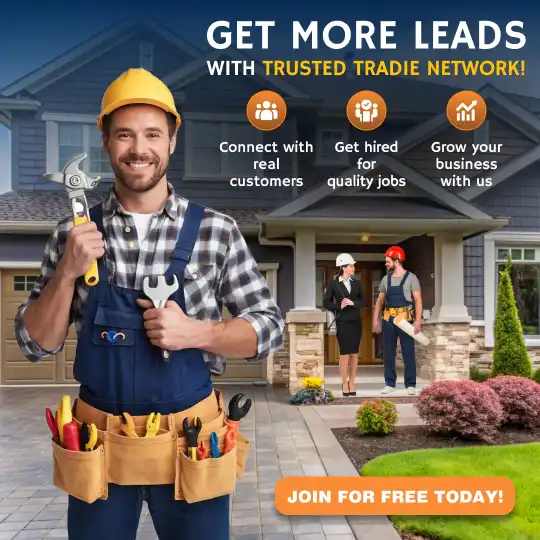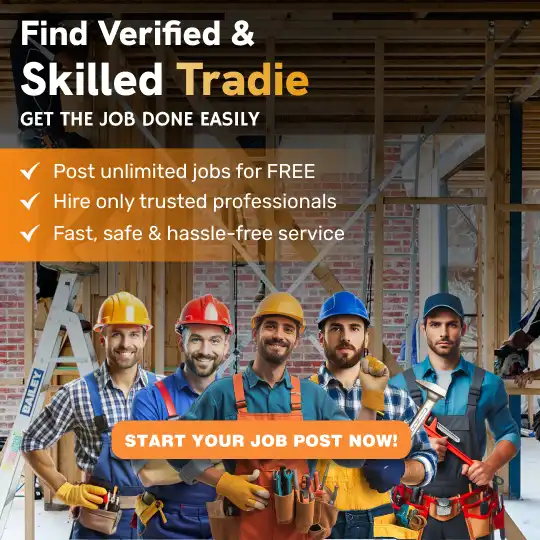Why Wearable Tech Is Improving Safety and Efficiency for Field Workers?

Field jobs have always been hands-on, high-energy, and sometimes risky. Whether it’s construction sites buzzing with heavy machinery, tradies working long hours outdoors, or technicians fixing equipment in remote locations, the challenges are real. Over the years, helmets, gloves, and safety boots have become standard gear but today, there’s something new transforming the field: wearable technology.
From smart helmets to fitness trackers and AI-powered sensors, wearable tech for field workers is changing how companies approach safety and efficiency. Instead of just reacting to accidents, businesses can now predict risks, monitor performance in real-time, and keep their workers connected like never before.
In this article, we’ll explore why wearable technology in workplace safety is not just a fancy trend but a real game-changer. We’ll also see how it is helping tradies and field workers become more efficient, saving time, costs, and sometimes even lives.
The Rising Role of Wearable Tech in the Field
Think about how smartphones completely transformed the way we connect and work. Now, imagine that same kind of shift happening for field jobs. That’s exactly what’s going on with wearable technology. Devices like smart vests, helmets, wristbands, boots, and even glasses are no longer just protective gear, they’re becoming smart tools that add an extra layer of safety and efficiency.
For example:
-
Smart helmets with built-in sensors can detect toxic gases or unsafe environments and alert workers before danger escalates.
-
Smartwatches and wristbands track vital signs like heart rate, fatigue, and stress, helping to prevent exhaustion or health-related accidents on site.
-
Smart glasses display real-time instructions, blueprints, or safety steps directly in a worker’s view, reducing downtime and the need to constantly check manuals.
These innovations are far more than cool gadgets. For construction worker safety devices, they represent prevention. Workers stay alert to risks, supervisors have better visibility of site safety, and companies can cut down on costly accidents. It’s a win-win, boosting both safety and productivity while giving tradies the confidence to focus on their jobs.
Why Safety Comes First in Field Work?
Every field worker knows the risks. Construction, mining, logistics, or even road maintenance jobs often involve unpredictable conditions. One wrong step, poor visibility, or an unnoticed hazard can lead to accidents. Traditional safety methods like training and protective gear are still essential, but they can’t always prevent human error.
This is where wearable technology in workplace safety comes in. It acts like a personal assistant, constantly monitoring surroundings and health. For example:
-
Fall detection sensors immediately send alerts if a worker slips or falls.
-
Location trackers help supervisors know where workers are, especially in remote or hazardous areas.
-
Smart vests can measure body temperature and warn against heat stress in hot climates.
Instead of waiting for an incident to happen, these devices allow action before danger strikes.
Efficiency: The Other Side of the Coin
Safety is the number one priority, but fieldwork is also about productivity. Deadlines, budgets, and quality all depend on how efficiently workers can perform their tasks.
Efficiency tools for field workers are now being built right into wearables. Imagine tradies getting step-by-step project instructions on smart glasses without needing to flip through manuals. Or technicians using voice-controlled smart helmets that keep their hands free for the actual work.
Wearable tech not only makes jobs safer but also helps workers:
-
Complete tasks faster.
-
Reduce errors caused by miscommunication.
-
Stay connected with teams even in noisy or remote areas.
For companies, this means lower downtime, fewer costly mistakes, and smoother project delivery. For workers, it means less stress and more confidence in their job.
Types of Wearable Tech Transforming Field Work
Let’s break down some of the most common and effective wearable tech for tradies and field workers being used today:
1. Smart Helmets
These helmets do more than just protect your head. They can:
-
Detect fatigue by tracking head movement.
-
Provide augmented reality (AR) displays for instructions.
-
Warn of dangerous gas levels or environmental hazards.
2. Smart Glasses
Perfect for workers who need hands-free support. These can:
-
Show 3D models, blueprints, or repair guides directly in the worker’s view.
-
Connect to supervisors for real-time problem-solving.
3. Smart Vests and Clothing
Equipped with sensors, these can:
-
Monitor heart rate, stress levels, and body temperature.
-
Alert workers if they are overheating or overexerting.
4. GPS and Location Trackers
Especially useful in large sites or remote areas. Supervisors can:
-
Track worker location for safety.
-
Deploy help faster in emergencies.
5. Wristbands and Watches
Similar to fitness trackers but designed for tough environments. They can:
-
Track steps, fatigue, and even hydration levels.
-
Provide instant alerts in case of health irregularities.
These devices are proving that improving tradie efficiency with tech isn’t just about speed but also about smarter, safer workflows.
Real Benefits of Wearable Technology for Field Workers
The impact of wearables goes beyond convenience. Here are some of the most powerful benefits companies and workers are experiencing:
1. Fewer Accidents
With continuous monitoring, workers are warned before hazards escalate into accidents. For example, heat stress sensors can prompt breaks before someone faints.
2. Better Communication
No more shouting across noisy construction sites. With smart headsets or glasses, tradies can stay connected with supervisors instantly.
3. Cost Savings
Fewer accidents mean lower insurance claims. More efficiency means faster project completion. Together, this saves companies thousands of dollars.
4. Higher Worker Confidence
When workers know they’re protected by construction worker safety devices, they focus better on their job without constant worry.
5. Data-Driven Insights
Wearables collect valuable data, like how long certain tasks take or which areas pose the highest risks. This helps managers make smarter decisions.
The Human Side of Wearable Tech
Some workers might worry: “Will this tech replace me?” The reality is quite the opposite. Wearable technology is not about replacing workers, it’s about supporting them.
Think of it this way: helmets, boots, and gloves didn’t replace workers; they made their jobs safer. Similarly, wearable tech for field workers adds another layer of support. It helps reduce stress, keeps workers healthier, and ensures they get home safely at the end of the day.
This is especially important in industries where long hours and physical strain are common. If a smart device can prevent overwork or spot early signs of fatigue, it could mean years of healthier, safer careers for tradies.
Challenges and Concerns
Of course, every technology comes with its own set of challenges, and wearable tech is no different. Some of the most common concerns include:
Cost: For small and mid-sized businesses, investing in wearable devices for every worker can feel overwhelming. The initial cost of smart helmets, vests, or trackers might seem high, especially for companies working with tight budgets.
Privacy: Another major concern is worker privacy. Since many devices monitor health, movement, or location, some workers worry about being tracked constantly. This can create resistance if they feel the technology is more about surveillance than safety.
Training: Introducing new devices also requires training. Workers need to understand how to use them properly, and managers must learn how to interpret the data effectively. Without proper onboarding, the benefits of wearable tech might not be fully realised.
The good news is that companies like Trusted Tradie Network (TTN) and other innovators are already addressing these concerns. By designing affordable, user-friendly devices that prioritise safety over surveillance, they’re making wearable technology more accessible and practical for businesses of all sizes.
How Wearables Are Shaping the Future of Tradie Work
Looking ahead, the role of wearables will only expand. AI integration, machine learning, and real-time analytics will make devices even smarter. Imagine helmets that can predict structural risks, or vests that adjust cooling based on body temperature.
Companies that adopt these innovations early will not only keep their workers safer but also gain a competitive edge in productivity.
Tradies and field workers, too, will see their roles evolve. Instead of spending energy on repetitive, manual checks, they can focus on skilled tasks while wearables handle monitoring and reporting.
Final Thoughts
Work in the field will always demand resilience, skill, and hard work. But with the rise of wearable technology in workplace safety, workers don’t have to do it all alone. From construction worker safety devices to efficiency tools for field workers, these innovations are making sites safer, projects faster, and jobs easier.
Companies like TTN are showing how embracing wearable tech can transform the daily lives of tradies. For businesses, it’s a smart investment. For workers, it’s peace of mind and a safer path home at the end of the day.
As technology continues to evolve, one thing is clear: wearable tech for tradies is not just the future, it’s the present. And it’s already proving that safety and efficiency go hand in hand.

